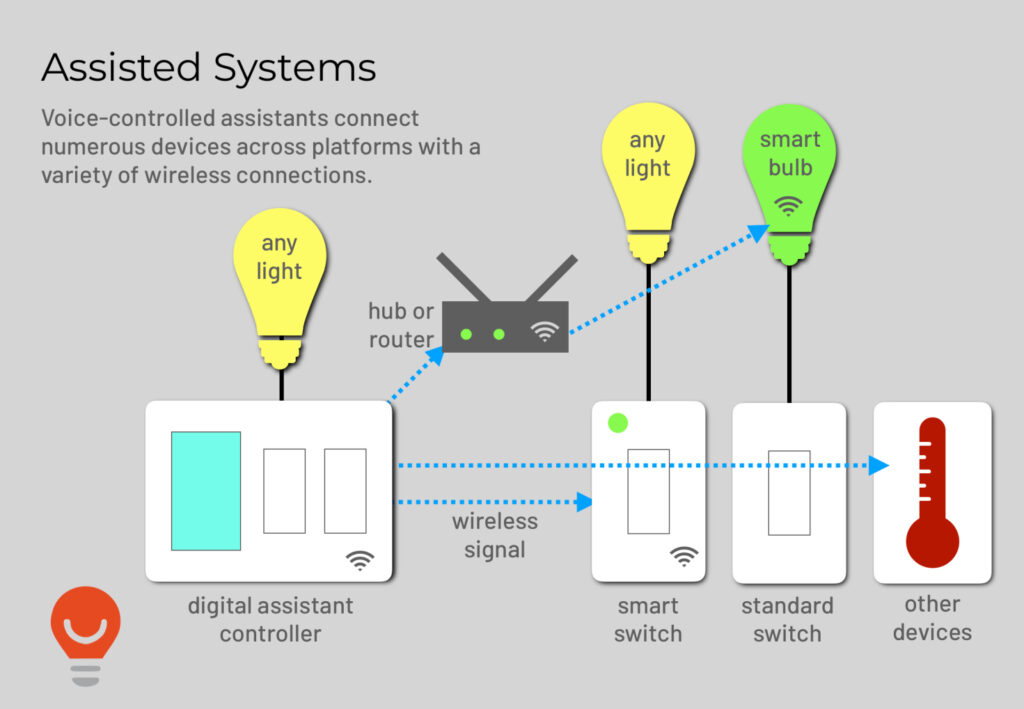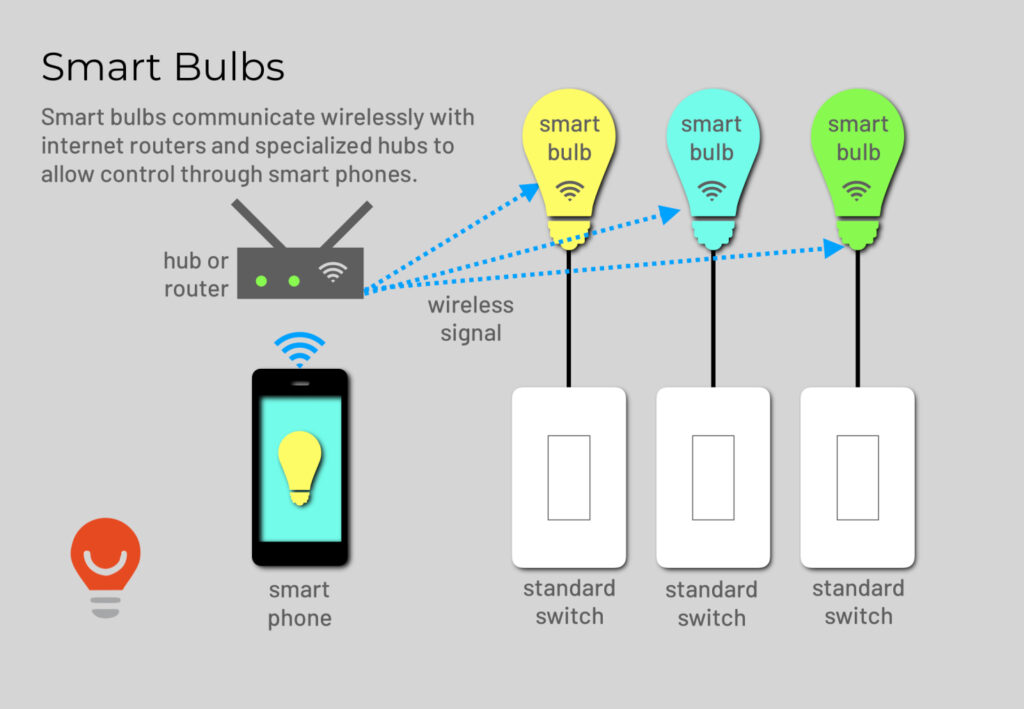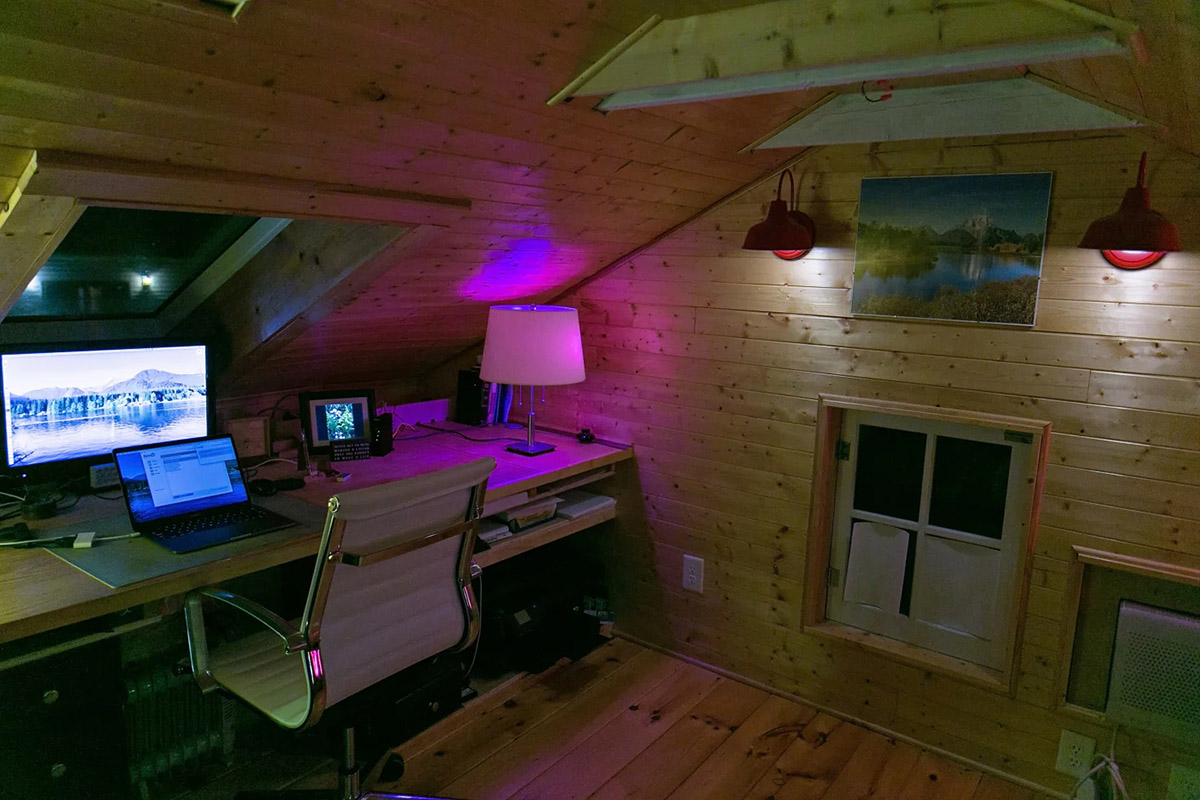No. Er, Yes. Wait a minute, is this a trick question?
Retailers and websites are hawking new smart gadgets for our homes incessantly, essentially trying to do what Apple did for smart phones: make them cost a whole lot more. There are smart coffee makers, smart pet feeders, smart doorbells, smart thermostats, smart irrigation systems, smart audio systems, smart ovens and even smart bathroom mirrors that give you the forecast. I remember the good old days when I had to pull out my phone to get minute-by-minute forecasts. Quaint, I know.
Smart lighting is great idea for corporate growth: it can make customers replace all the dumb lighting they have in their homes at much higher prices and profit margins than ever before. But is Smart lighting smart for the consumer? A few years ago I set out to find the answer when I remodeled a studio in my carriage house (that sounds fancier than office above my garage).
I bought smart-this and smart-that from a variety of manufacturers. My lights were going to turn on and off automatically when I needed them, change colors to suit my mood, and connect to may air conditioner and digital picture frame. I was looking forward to nirvana. I got the system up and running and changed my lightbulbs to red. Then blue. That’s cool.
Have you ever had to restart your lightbulbs? Or wait to turn them off while they completed a wireless software update? Have you had to work in the dark because the internet was down and your lightbulbs were suddenly unresponsive? Have you ever spent $70 dollars on a light bulb that, after a couple of cool color changes, mostly just worked like any other bulb except less reliably?
If technology did not evolve at a crazy pace and I was stuck back four or five years ago, I’d say the Smart Choice would be to stay away from Smart Lighting. Stick with the dumb stuff. It works most of the time and, when it doesn’t, you just screw in a new light bulb.
A few years can make a big difference in today’s lighting industry. Now I wonder if sticking with dumb lighting is, well, a dumb idea. So what has changed? We know more than ever about the intersection of light and health and smart lighting may be the key to restoring a decent amount of wellness. Some technologies are more reliable than ever, a wider array of products exist, and of course now we can talk to our lights using Alexa.
Well, some of the reasons are good ones. If you like playing with expensive digital electronic toys or want your lighting to change colors when you throw dance parties, you probably already have smart lighting. If you do not, here are four reasons to jump in- and four to stay out.

Four Reasons to Join the Smart Revolution
1: Better Lighting. I design multiple layers of light into my projects and smart controls are the key to reaping all the benefits. A wall of switches and dimmers is unsightly, but I am more concerned with the ability to set the lights just right- and make it easy to recall that perfect look later. Smart systems can memorize my favorite settings, which means I am more likely to have good light all the time. I can adapt to mood, time of day, task and any number of needs and control it all easily.
2: Convenience. If you think it would be handy for the lights in the laundry room to turn on when you are carrying a basket of clothes (without using your elbow to smack the switch), smart lighting may be for you. The back door and kitchen lights can come on when your arms are full of groceries, and stumbling in the dark can be a thing of the past.
3: Waking and Sleeping. Convenience is not a big factor in my decision-making process but health and wellness are. Smart lighting can slowly brighten to wake me up in the morning and dim and shift colors at night to disturb my sleep less. The benefits of regular circadian entrainment (a normal wake/sleep schedule) are enormous, and I want them. Smart lighting is the best alternative so far to living in a tent.
4: Augmenting Daylight. Winter is cold and dark where I live and the days get very short. There is not enough sunlight to keep me happy and healthy, and smart lighting can replace some of the lost photons. This can be critical to health, and smart controls combined with color-tuning LEDs can be a smart answer.

Smart Lighting is Dumb
1: Complicated Technology. The TV Commercials look awesome: “Alexa, get ready for game night.” Our favorite 80’s music starts playing, the front door lights pop on, and the living room dims to set the right atmosphere. Easy, right? What we didn’t see is all the setup it took to make that happen. Each device is a new one that needs programmed, integrated, updated, and maintained. Each one can cause a problem that disrupts the entire system. The ads make it look easy, but most of it really is not.
2: Unreliable. We are used to flipping a switch and getting light every single time. Some smart lighting works most of the time while other products work some of the time. That’s a big difference that results from every device being connected wireless to others. One break in the link may leave you in the dark.
3: Expensive. A simple light switch costs about $2. A smart switch can easily run $50 or more. Multiply that number by every switch in your home, add in a good number of $70 smart bulbs, and you can see why the manufacturers love it when you buy this stuff.
4. Evolving. I recently bought a Brilliant.tech lighting controller and I like it. But will Brilliant be around next year or be swallowed by another company or disappear like so many startups? I already have a handful of obsolete hubs that are legacy products and they are only four years old. One of my favorite smart bulb makers- Ketra- was recently acquired by lighting giant Lutron and their future is uncertain. Like computers and smart phones, if you can wait another year I guarantee there will be better products available.
Confused? So am I. For now I’ll stick to reliable systems like Lutron’s Caseta smart switches. But a new light is on the horizon….
